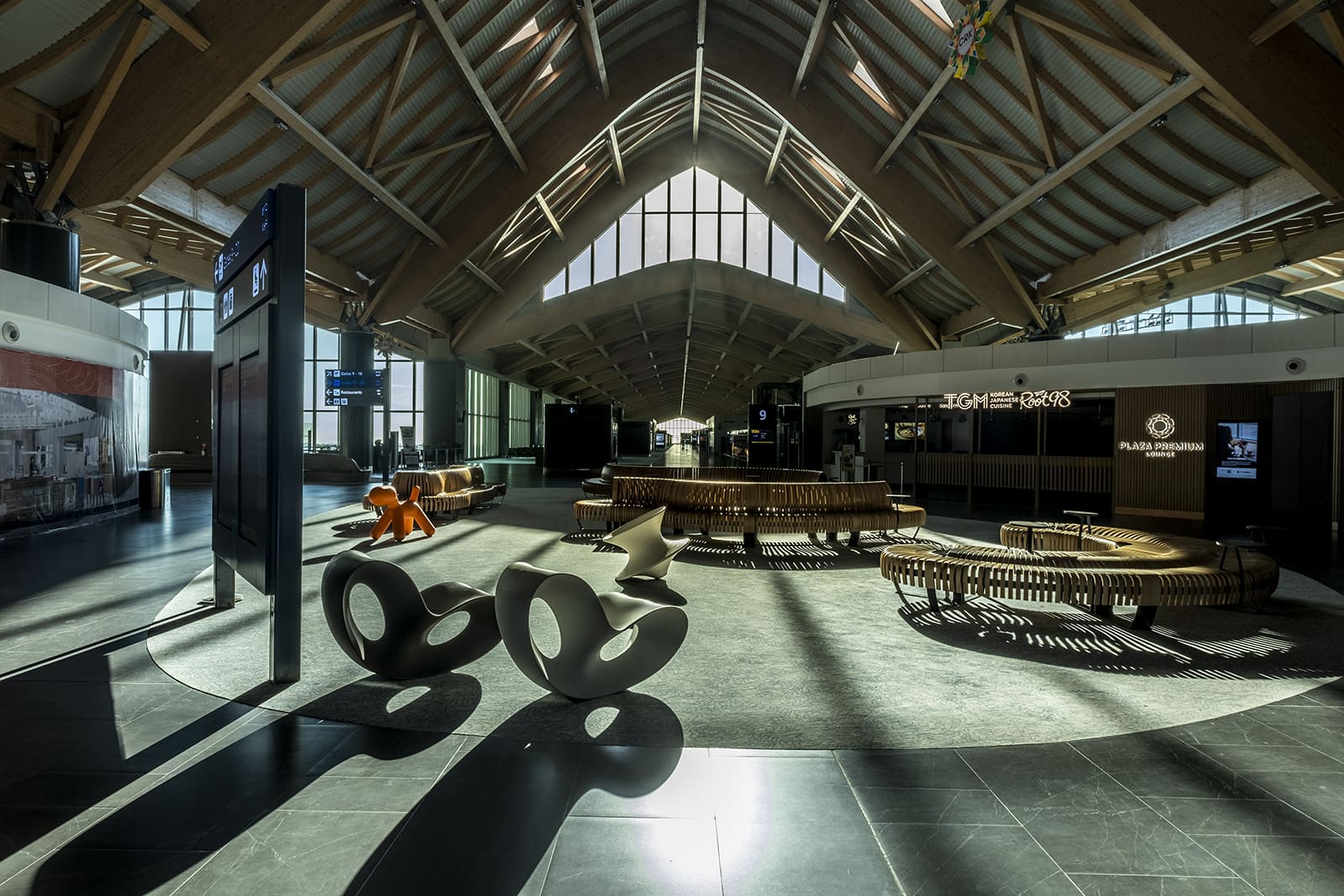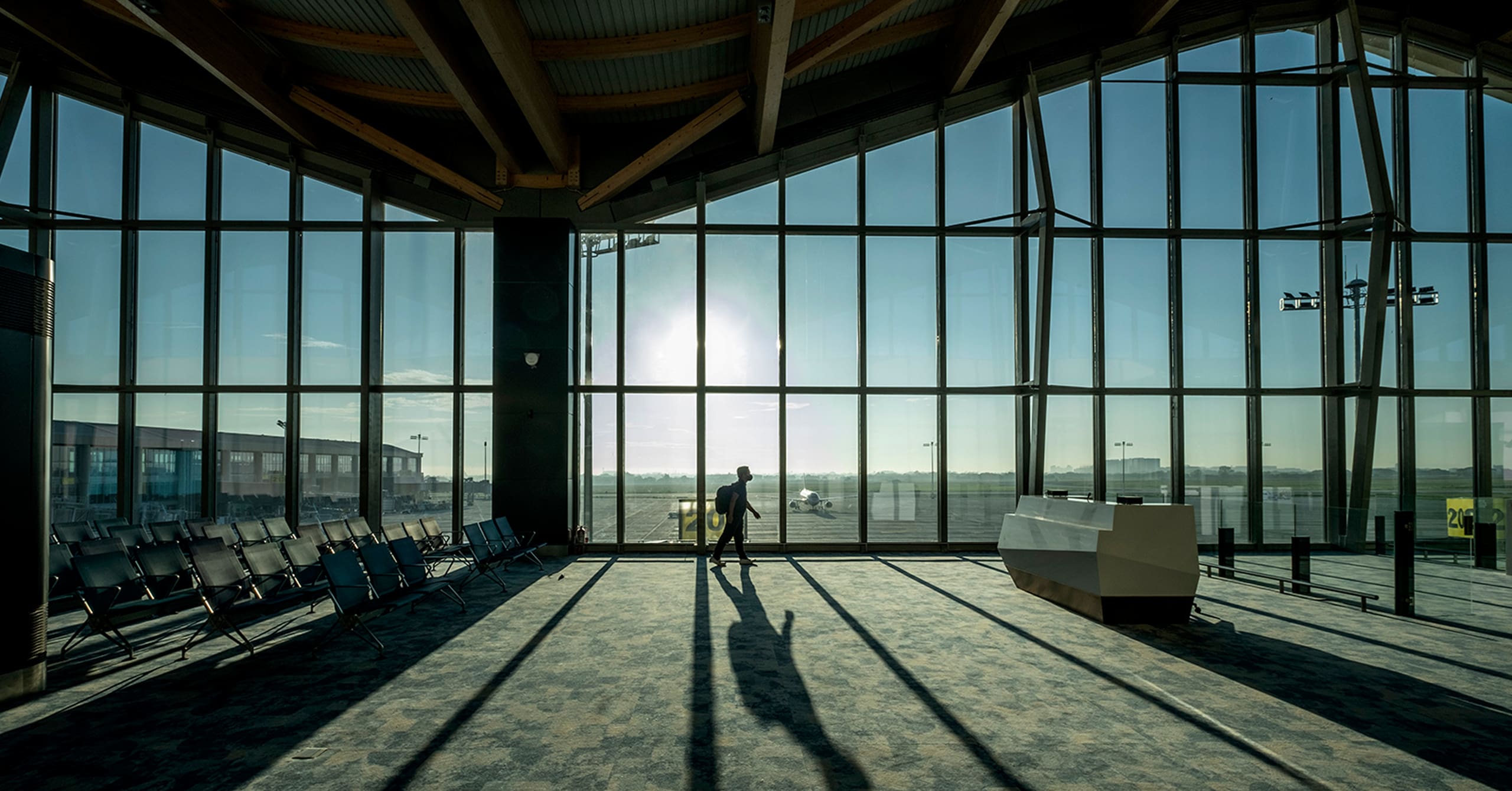Airports present the duality of human existence. Miguel Lim Quizon examines the spatial culture of flight.
“When traveling to certain places, we move forward with our bodies and backwards in our memories.”—Andrés Neuman
We have always been allured by the charm of travel. From tales of early pilgrims to the conquest of new lands, from adventurers searching for unique excursions to wanderers chronicling their trips, journeying to the unfamiliar remains captivating. I once chanced upon a quote differentiating a tourist and a traveler: the former needs to escape while the latter desires experience. Indeed, these movements are valued and weighed by moments carved in our memories.
For travelers who choose to travel by plane, the burden of traversing and passing through any airport space is almost always a daunting task. For most passengers, this generic infrastructure is a site where one needs to spend the least amount of time; we go in and out. But few appreciate that our first interface and interaction with the city (and, consequently, the nation) is the airport.
I assume that it is the countless delayed flights and hours of transits and transfers that made me ponder about airport spaces more intimately, obsessed enough to use it as a topic for both my postgraduate thesis as well as my doctorate. Airports offer a myriad of trajectories should one decide to think about more closely. For instance, scholarships about airports focus on crunched numbers, statistics, and technically-complicated topics on expansions, neglecting the richness of airports when it comes to its design philosophies, socio-cultural perceptions, and the lived experiences.
What makes airport spaces a curious site for inquiry? In 1995, French anthropologist Marc Augé coined the term “non-place” to describe transitory spaces where humans remain anonymous, and that do not hold enough importance to be considered a place in their anthropological definition. He explicitly stated shopping malls, hotel rooms, motorways, and airports as examples of these non-places. But in this day and age, where airports function as nodes and hubs of economic, cultural, social, and even political exchanges, I would like to think that they can be regarded as places that reflect significant aspects that mirror opposing qualities. And these produce a specific kind of tension that renders airport spaces as interesting locations for cultural inquiry.
State of limbo
There are specific qualities in an airport that maintain my curiosity: it is liminal, it is transitory, and it is monumental.
Out of these qualities, I find its liminality the most captivating. Liminal means “occupying a position at, or on both sides of; a boundary.” It is the threshold, relating to gaps and cusps in the physical, emotional, and even metaphorical state. An airport has the capacity to function in all these three different conditions. It always fascinates me whenever I realize that the area beyond passport and visa control, security checks, and customs, a passenger is still “up in the air.” He or she has not left the city of origin, but has yet to arrive at the city of destination. In a way, at that specific moment inside the airport, the passenger is in limbo.

Another aspect of the airport that strikes me is it remains to be a space in perpetual motion. The brief encounters inside airports may have led Augé to argue about the unfavourable side of anonymity, but there is something enchanting about your anonymity inside an airport. What is also interesting is that inside this built environment, all details and information about each passenger is actually recorded. A central system knows the identity of each passenger entering and exiting the airport. However, as a passenger who remains comfortably oblivious of these details, the fleeting glances and momentary encounters often leave their mark once passengers receive their boarding passes or dwell in one of the shops on the way to the boarding gates. For the few who have been inspired by romantic movies and novels, they even expect to come across their soulmates inside airports. This makes sense because as spaces of transience, surprise airport encounters are almost always serendipitous.
The architecture of airports are becoming more impressive, complex, and monumental in size, technology, and design. More than just their function as transport hub, these mega-structures are responsible for creating grand statements for cities and nations. In a way, they mirror a country’s nationhood. They have become icons in their own right. The Jewel Changi Airport can be mentioned in the same breath as the Marina Bay Sands. Kansai International Airport, located in the artificial island in the middle of Osaka Bay, demonstrates Japanese ingenuity when it comes to engineering and design. Doha’s Hamad International Airport focuses on amenities and facilities designed for transiting travellers, mirroring Qatar’s aim to exhibit Middle Eastern hospitality. Airport monumentality is not just architectural feats, but, more importantly, how memory plays in the dialogue between spatiality and lived experiences.
Airports, I suppose, are monumental non-monuments. Monumentality, according to the Getty Research Institute, is being a marker of history and repositories of collective memory. It invokes a sense of power, greatness, and gravitas that commands public attention and recognition. It is interesting to note the bearing of memory when talking about airports as monuments.
Airports have always been spaces where binaries are constantly at play: departures and arrivals, public and private, happiest and saddest, landside and airside, legal and illegal. It is precisely this relentless fluctuation between opposites that render airport spaces in perpetual motion. While passengers navigate through seemingly generic layouts of airports from different corners of the world, we barely get the chance to gaze upon its richness, where movements and moments converge. Ultimately, airports are a testament of how humans are homo viator: always on the move, either flowing with or against the current.

